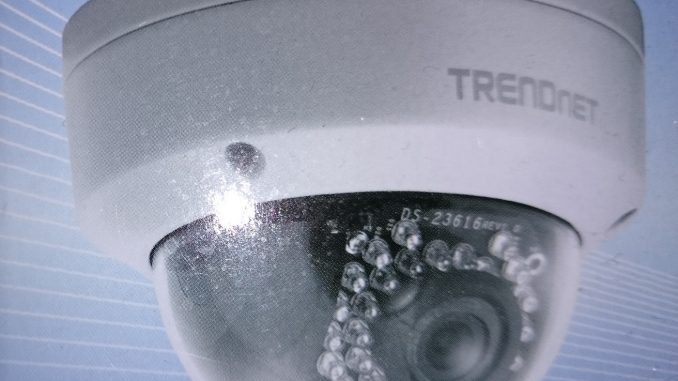
To install security cameras at home, there are several types for considerations.
- Wireless (Wi-Fi) cameras
- Connecting to a home network via Wi-Fi network (802.11b, 802.11g, 802.11n, 802.11ac, … etc.).
- Suitable for indoor usage
- Pros:
- Easy to install: plugging power adapter into an electrical outlet and connecting to the home network via Wi-Fi, which is available at most homes.
- Cons:
- Connection interruptions by signals from other Wi-Fi networks, especially in a neighborhood with many homes nearby
- Connection interruption by operating microwave ovens (in 2.4GHz frequencies).
- Installation near an electrical outlet.
- Limited connection bandwidth – potentially reducing the available bandwidth in a Wi-Fi network because the Wi-Fi camera is completing the bandwidth usage with other Wi-Fi devices of the same Wi-Fi network.
- Suggestions: [amazon asin=B00XJ59Q4E&template=iframe image] [amazon asin=B00KNM763E&template=iframe image]
- Power over Ethernet (PoE) cameras
- Connecting to a home network via an Ethernet cable.
- Supplying power from a PoE switch via the same Ethernet cable.
- Available for indoor and outdoor usage
- Pros:
- Flexible. Can be installed almost anywhere as long as an Ethernet cable outlet is nearby (i.e. no electrical outlet is required near the PoE camera).
- Stable network connection.
- Plenty of connection bandwidth, and can transmit high resolution video.
- Cons:
- Requiring an Ethernet cable outlet to connect to a home router.
- Requiring additional equipment, i.e. a “PoE switch” to supply power to the PoE camera via the Ethernet cable
- Suggestions: [amazon asin=B00I3GKM06&template=iframe image] [amazon asin=B011ID2TEW&template=iframe image]
- Battery-operated Wi-Fi cameras
- Connecting to a home network via Wi-Fi network.
- Available for indoor and outdoor usage.
- Pros:
- Very easy to install. No electrical outlet nor Ethernet cable outlet is required.
- Very flexible. Can be installed almost anywhere.
- Cons:
- Connection interruptions by signals from other Wi-Fi networks, especially in a neighborhood with many homes nearby.
- Connection interruption by operating microwave ovens (in 2.4GHz frequencies).
- Limited connection bandwidth – potentially reducing the available bandwidth in a Wi-Fi network because the Wi-Fi camera is completing the bandwidth usage with other Wi-Fi devices of the same Wi-Fi network.
- Replacing batteries every a few weeks or a few months, depending on the configuration.
- Suggestions: [amazon template=iframe image&asin=B00ZX05MY6]
Key Features
- Indoor Cameras
- Designed for operating in room temperature.
- Outdoor Cameras
- Designed for operating in outdoor environment: weather-rated housing, water-proof, wide range of operating temperature.
- Motion Detection
- Recording video after detecting a motion, and stop the recording afterwards.
- Infrared (IR) Night Vision
- Recording video in black and white at night.
- Network Storage / Cloud Storage
- Video recordings are available for review over the Internet on a smartphone or tablet.